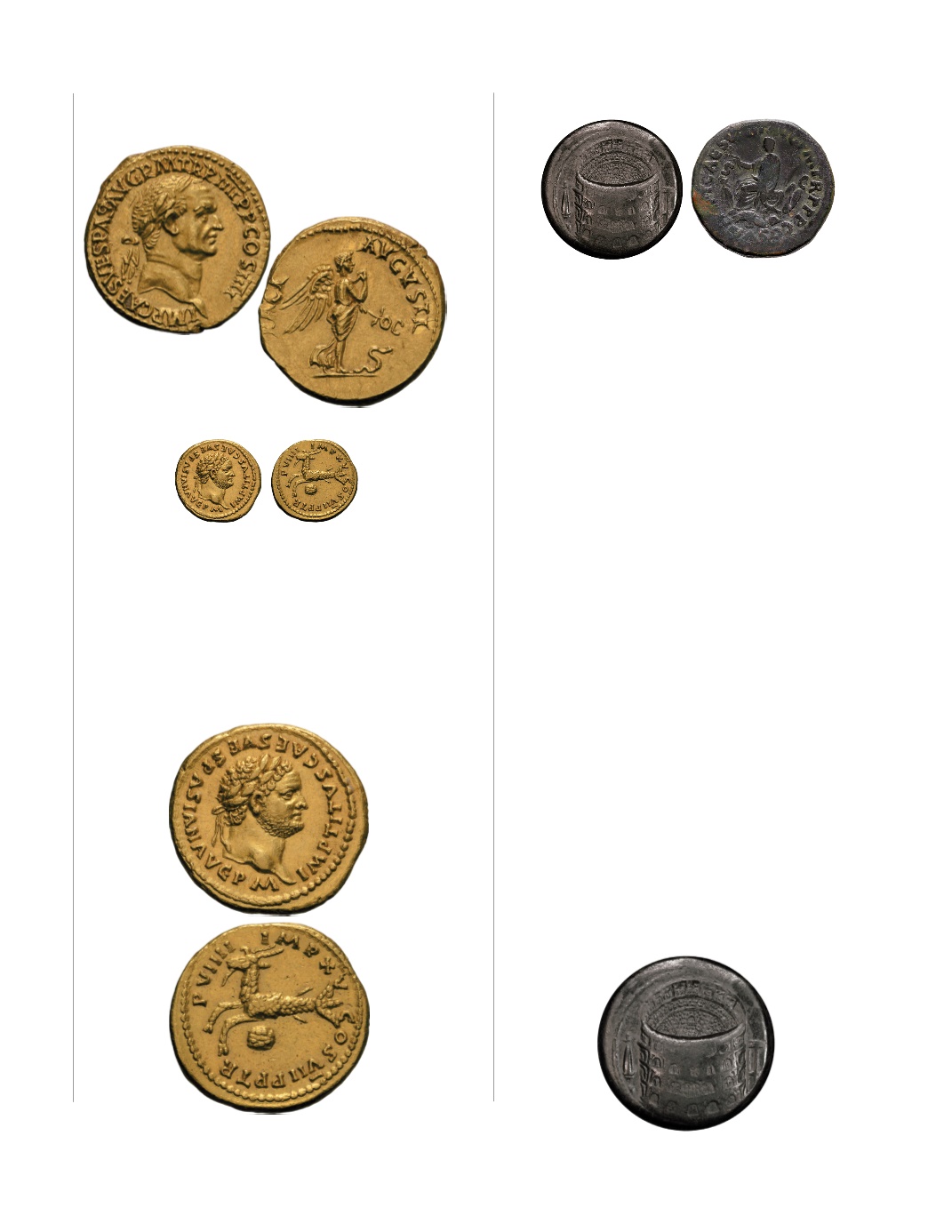

41
286. Ex Sangiorgi, 15 April 1907, Strozzi, lot 1855.
Ex Cumae Hoard of 1868
.
161.
Titus.
79-81 AD. Aureus, 7.47g (6h). Rome, 79
AD. Obv: IMP TITVS CAES VESPASIAN AVG P
M Head laureate right. Rx: TR - P VIIII - IMP XV
- COS VII P P Capricorn left, globe below. RIC 36
(R2), pl. 85 = BMC 34, pl. 45.2 (same dies as ours).
Paris 31. Cohen 293 (Schellersheim, 50 Fr.). Calicó
771 (our coin illustrated). Mint State
$15,000
Ex M&M XVII, 2-4 December 1957, lot 424
.
Colosseum
162.
Sestertius, 27.95g (5h). Rome, 80-81 AD. Obv:
Colosseum seen from front and above between obe-
lisk on base (Meta Sudans) and porticoed building
of two stories (Baths of Titus), without legend. Rx:
[IMP] T CAES V[ESP] AVG P M TR P P P COS
VIII S - C Titus seated left holding branch and roll
on curule chair set on globe among arms. BM 190,
pl. 50.2 (same rev. die). Paris 189, pl. LXXXI (same
dies). RIC 184 (R2). Cohen 400 (80 Fr.). Colosseum
sestertii are rare and extremely desirable, because of
the fame and importance of the building they depict,
which still survives today. This is an excellent
specimen of the earlier variant of the coin, struck
by Titus himself rather than Domitian, with glossy,
dark-green surfaces and no tooling or corrosion.
Despite minor weak striking of the Colosseum’s
exterior wall facing the viewer, the interior, showing
boxes and tiers filled with the heads of numerous
spectators, is well struck and complete. Bold VF/
Good Fine
$85,000
From a British collection, acquired in 1978 by Paul
Munro Walker, Bournmouth
.
See N.T. Elkins, The Flavian Colosseum Sestertii,
Numismatic Chronicle 166, 2006, p. 216, 6, pl. 31
(our dies). To demonstrate the popular nature of
Vepasian’s rule, the Colosseum was built on the site
of Nero’s demolished Golden Palace. The reverse
type of Titus seated as master of the world (his
curule chair set on globe), bringing peace (olive
branch) by means of victory over enemies (captured
arms), fits well with the recently discovered dedica-
tory inscription of the Colosseum, stating that the
emperors constructed it “from booty” (ex manubis),
doubtless chiefly the booty of the Jewish War
.
Enlargement
Enlargement
Enlargement


















